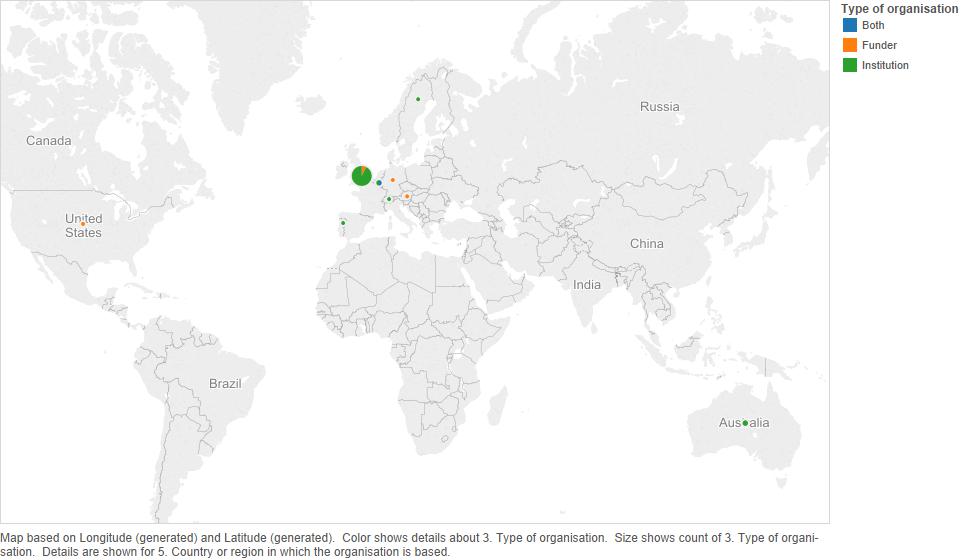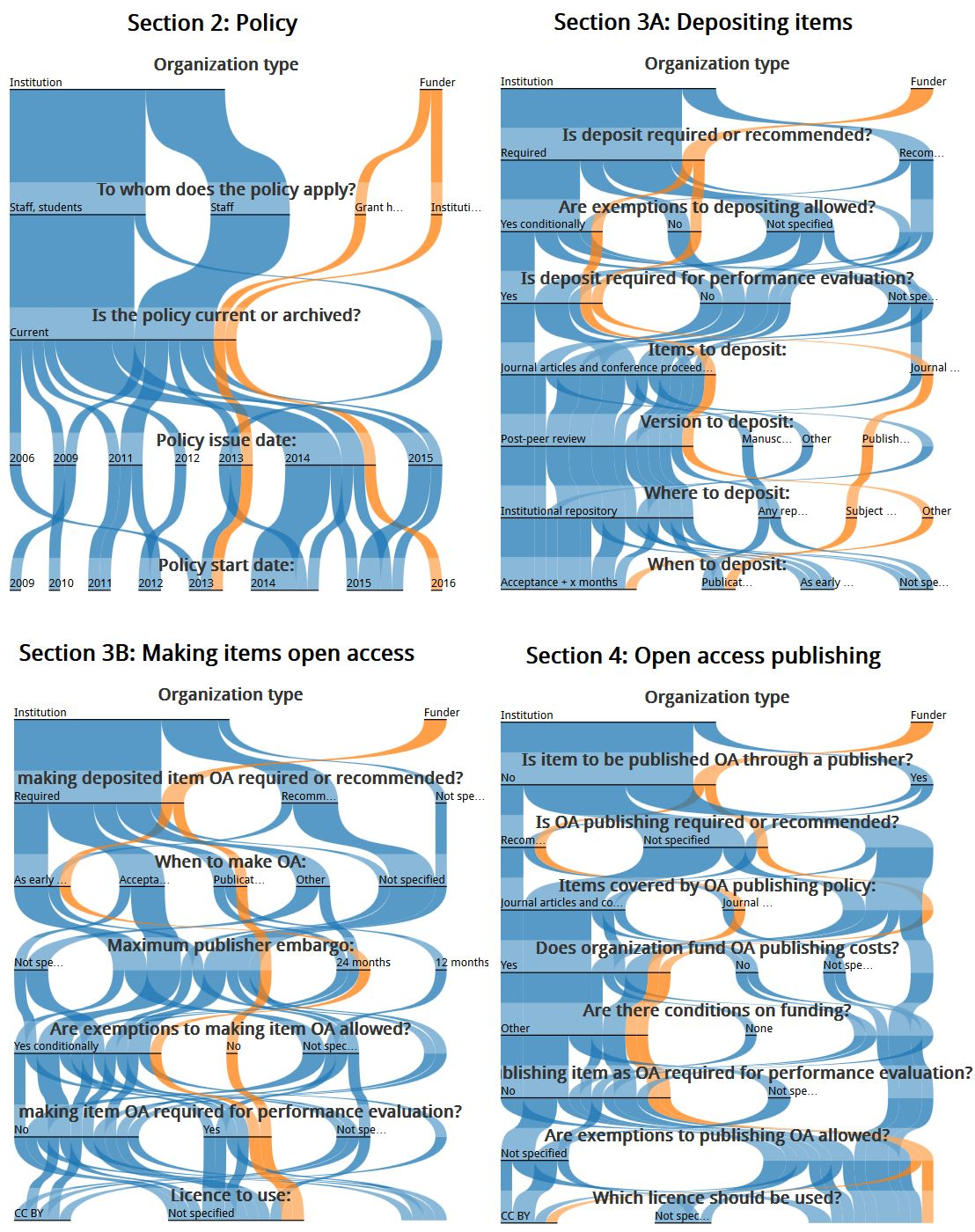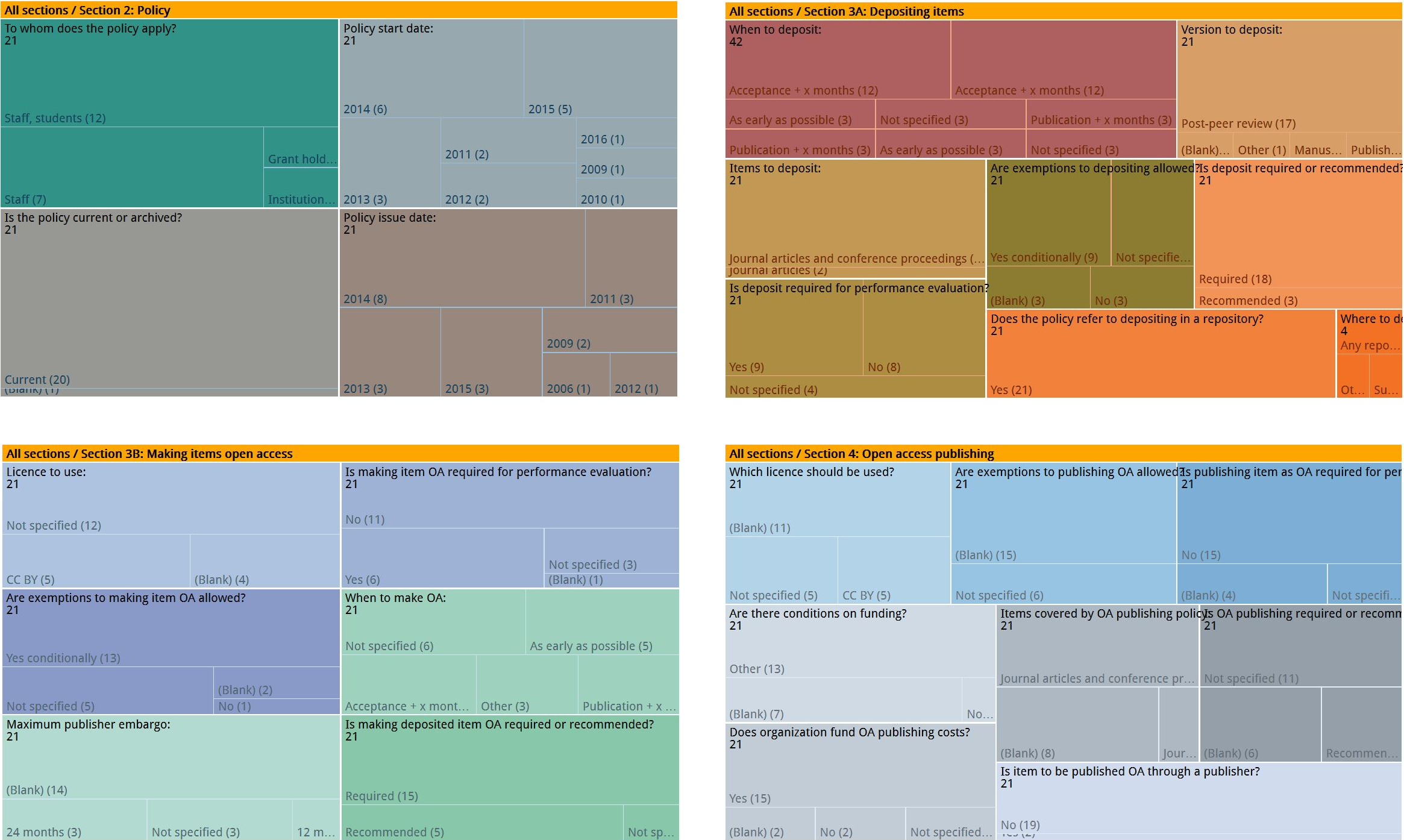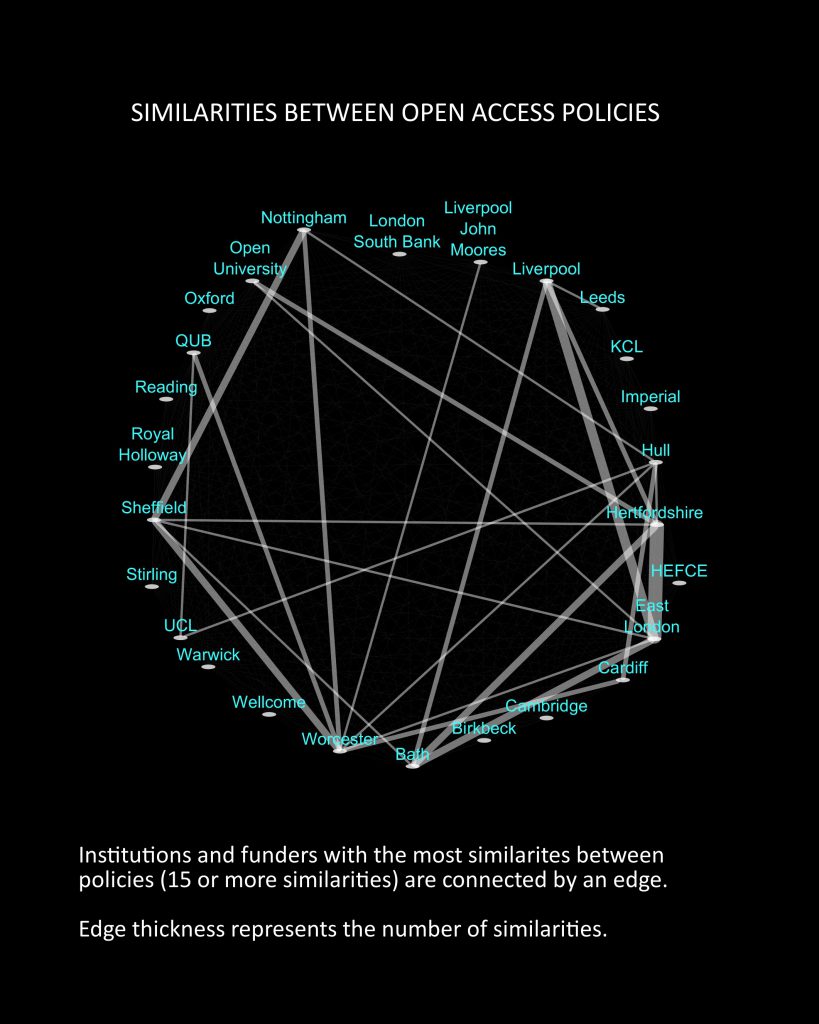There are now many Open Access (OA) policies, from universities, research institutions and funders listed in SHERPA/JULIET, ROARMAP and MELIBEA. Such policies are often expressed in different ways, making the OA policy landscape complex for all the stakeholders involved in the process of sharing and publishing research outputs. This is particularly the case for authors who are subject to one or more OA policies but also to academic support staff who need to deliver advice on policies and monitor and report on compliance.
It may be challenging to request universities, research institutions and funders worldwide to converge into a single policy type. Notwithstanding, a schema that would inform policymakers about how to express their policies in a systematic manner would be an initial step to ensure greater clarity and uniformity in the way information about OA policies is recorded and made available.
‘Internationally, there are now over seven hundred open access policies. Even just in the UK, key funder policies do not always align, making it possible that researchers who make their work openly available may meet some, but not all requirements. Greater clarity and, hopefully, convergence of policies will make open access easier to communicate, administer and achieve.’ – Torsten Reimer, Imperial College London
To achieve this goal, Jisc, SHERPA Services and ROARMAP* have jointly developed a Schema for Open Access policies. The proposed schema has evolved from an analysis of universities’ and funders’ OA policies as well as from an analysis of information recorded in OA databases. Fundamentally, the schema aims to encourage policymakers worldwide to express their policies in a consistent way.
Some of the benefits for universities and funders to adopt a common schema for OA policies include:
▪ Enabling clear guidance and systematic information to be provided to academic authors by funders, universities and online services;
▪ Reducing the cognitive and administrative burden on academic authors when they are subject to one or more policies;
▪ Allowing compliance with policies to be monitored and reported systematically, enabling lessons to be learned and improvements to be made.
Following an initial phase where we have consulted the academic community on the proposed schema, we have subsequently revised the schema and invited a number of universities and funders worldwide to become early adopters. In total, 38 organisations representing universities, funders and government departments based in Europe (35), North America (1) and Australia (1) have completed the schema for open access policies (see Figure 1). The data collected shows some similarities in OA policies requirements, however, we do not seek to make recommendations on whether and how OA policies should align. Our ultimate goal is to encourage organisations to adopt the schema and to promote discussions on how policies can be expressed more systematically.

In the case of the UK, a cluster of 25 universities and 2 funders have filled the schema and shared their results with us. The data collected shows that there are some commonalities between OA policies, for example, in requiring the deposit of items in a repository, in requiring items to be deposited in institutional repositories, and in requiring that the version of the items to be deposited is the author’s manuscript post-peer-review. By looking at the information provided by UK universities and funders, it is possible to observe the path that these OA policies follow and where there are greater commonalities between policies (see Figures 2 to 9). To look into more detail to the results for each section and field, click on the image and roll the mouse over the figures below.


Figure 10 illustrates the UK universities and funders OA policies that have 15 or more fields in common. These results show that OA policies are aligned in some of their criteria and therefore there is scope for policies to be expressed more systematically.

The majority of information we have collected is from UK universities but we aim to have a wider representation of universities, research institutions and funders from across the globe. This would enable us to build a more comprehensive picture of the global OA policy landscape as well as to have a better understanding of the extent to which OA policies can be expressed in a consistent way.
Following the positive feedback received from those organisations that have already adopted the schema, we would like to invite your organisation (universities, research institutions, funders, etc.) to adopt this schema and to help us build a more comprehensive picture about how policies are expressed as well as to gather more data from countries in the five continents. To adopt the schema, your organisation should complete this excel form. Detailed guidance notes are available in this supplementary document.
After filling the details of your organisation’s OA policy in the schema, we would like to request you to send us a copy of the schema via email (mafalda.picarra@jisc.ac.uk). We would like to use the data collected to develop more infographics about the geographical location of organisations with OA policies and to highlight some of the main commonalities between OA policies. We would also like to encourage your organisation to make a copy of the schema available on its website jointly with other relevant OA documents and information. Finally, we will be exploring ways in which we could share information about all the completed schemas from a central access point. Therefore, we will keep you informed about future developments.
Further Information and Resources:
Open Access Policy Schema form (.xls)
Open Access Policy Schema Guidance Notes (.docx)
Open Access Policy Schema: Presentation and Preliminary Findings (.ppt)
*The Schema for Open Access policies working group includes Alma Swan, Bill Hubbard, Neil Jacobs, Stevan Harnard and Mafalda Picarra.
